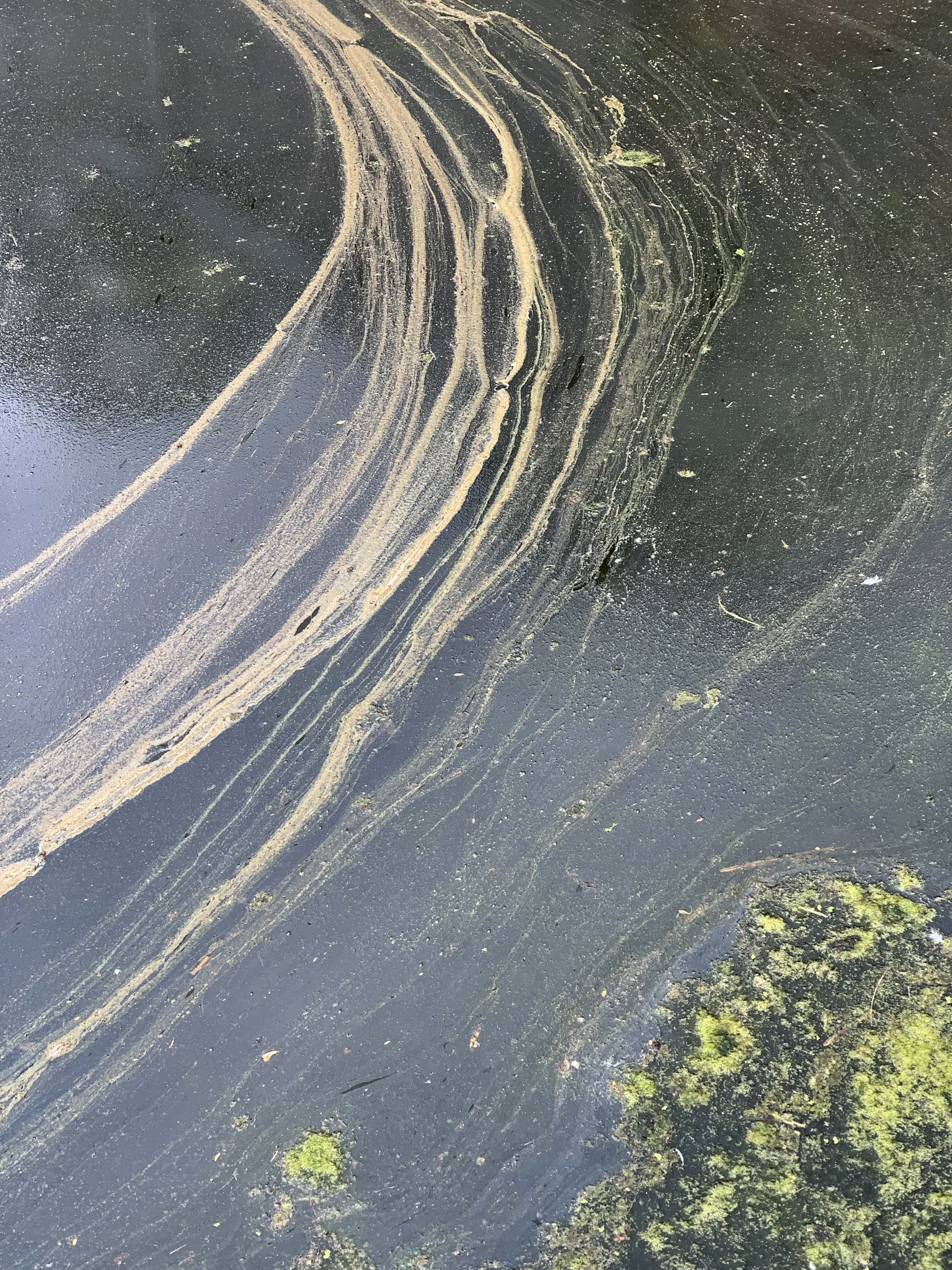Haustorium
2024
Haustorium has meant an exploration on fragility and the process of being and becoming affected within parasitic coexistence. It became alive on July 2 at Floating University Berlin as part of the one day collective exhibition FRICTION by students of MA Raumstrategien (Weißensee Kunsthochschule Berlin), in the framework of the seminar (PARA)SITES by Prof. Pauline Doutreluingne and as part of LEARNSCAPES PROGRAM 2024 of Floating University.
Participating artists (FRICTION): Alexey Kokhanov, Amanda Bobadilla, Asuman Kırlangıç, Bianca Lee, Carlos Ricoy, Emma Lang, Farokh Falsafi, Jeremy Knowles, Kathleen Bomani, Laura Bleck, Maria Fallada Llandrich, Mariana García Mejía, Merel Maan Galama, Nathalia Favaro, Nina Cavalcanti, Nischal Khadka, Philipp Khan, Sepehr Talebi, Xiao Zhang, xindi and Yupanqui Ramos.
Participating artists (FRICTION): Alexey Kokhanov, Amanda Bobadilla, Asuman Kırlangıç, Bianca Lee, Carlos Ricoy, Emma Lang, Farokh Falsafi, Jeremy Knowles, Kathleen Bomani, Laura Bleck, Maria Fallada Llandrich, Mariana García Mejía, Merel Maan Galama, Nathalia Favaro, Nina Cavalcanti, Nischal Khadka, Philipp Khan, Sepehr Talebi, Xiao Zhang, xindi and Yupanqui Ramos.
In our cryptic encounter,
I’ll surrender to the spell of dreams
and swim the tumultuous currents
of our symbiotic metamorphosis.
Without apparent notice,
we’ll crack the shell,
learn to affect each other,
soaking up past life tears.
Will you fragment me until I disappear?
Or instead, strain me to the point
where I am yet able to return,
shedding, glowing under a new skin?
Will you attempt to disguise
and impose, in fear, your truth as mine?
Or tenderly hold our opacities,
daring to love what you do not see?
For I am not the absolute but a multiplicity
dressed in layers of transparencies,
a parasite that struggles to belong
nowhere and everywhere, arriving here,
a world that once was, and now fades into another.
– Haustorium
I’ll surrender to the spell of dreams
and swim the tumultuous currents
of our symbiotic metamorphosis.
Without apparent notice,
we’ll crack the shell,
learn to affect each other,
soaking up past life tears.
Will you fragment me until I disappear?
Or instead, strain me to the point
where I am yet able to return,
shedding, glowing under a new skin?
Will you attempt to disguise
and impose, in fear, your truth as mine?
Or tenderly hold our opacities,
daring to love what you do not see?
For I am not the absolute but a multiplicity
dressed in layers of transparencies,
a parasite that struggles to belong
nowhere and everywhere, arriving here,
a world that once was, and now fades into another.
– Haustorium








The haustorium is the organ through which parasitic plants or fungi attach to the stems or roots of the host, forming a functional bridge that invades the host tissue to uptake water and nutrients. The etymology of the name (plural haustoria) corresponds to the Latin word haustor meaning ‘the one who draws, drains or drinks’.
I wanted to create something in collaboration with the space; something that I could not create by myself and over which, to a certain extent, I could not have control; a parasite that, like us, would have to learn to be affected and accept its metamorphosis (or its dissolution) within a relationship and friction with other beings. I also wanted to work and experiment with paper because it is a material I am very familiar with in my practice and because it is very fragile and easy to manipulate, but at the same time has an extraordinary capacity for resilience and transformation. Its shape was inspired by the algae found all over Floating University, the Hydrodictyon Reticulatum, commonly known as the Water Net.






The drawings were made at Floating University during some of the seminar sessions and constituted a series of tests for the final installation. This series and the poem Haustorium were not presented in the exhibition FRICTION.
References:
DERRIDA, Jacques. (2000). “Hostipitality”. Angelaki: Journal of the Theoretical Humanities, 5(3), 3-18.
TSING, Anna Lowenhaupt. (2012). “On Nonscalability: The Living World Is Not Amenable to Precision-Nested Scales”. Common Knowledge, 18(3), 505-524.
TSING, Anna Lowenhaupt. (2005). Friction: An Ethnography of Global Connection. Princeton University Press.
D’COSTA, Rhett; INSTONE, Lesley. (2021). “Becoming Entangled: Queer Attachments With Hemiparasites”. Performance Philosophy, 6(2), 61-81.
SIMON, Matt. (2018). Plight of the Living Dead: What Real-Life Zombies Reveal About Our World–and Ourselves. Penguin Books.
HARAWAY, Donna J. (2003). The Companion Species Manifesto: Dogs, People, and Significant Otherness. Prickly Paradigm Press.
CLÉMENT, Gilles. (2004). Manifesto of the Third Landscape. Trans Europe Halles.
GLISSANT, Édouard. (1997). “For Opacity.” In Poetics of Relation (189-194). University of Michigan Press.
COOPERATIVE CRÁTER INVERTIDO, Art Collective. (2019). “Grounded Steps. Quisiera Tener Los Pies Llenos De Tierra, On Collective Imagination”. Mister Motley. Retrieved from <https://www.mistermotley.nl/grounded-steps-quisiera-tener-los-pies-llenosde-tierra> [Accessed 12 May 2024].
WELLS, Rohan D.S., HALL, J.A., Clayton, J.S., CHAMPION, P.D., PAYNE, G.W., & HOFSTRA, D.E. (1999). “The Rise And Fall Of Water Net (Hydrodictyon Reticulatum) In New Zealand”. Journal of Aquatic Plant Management, 37, 49-55.
References:
DERRIDA, Jacques. (2000). “Hostipitality”. Angelaki: Journal of the Theoretical Humanities, 5(3), 3-18.
TSING, Anna Lowenhaupt. (2012). “On Nonscalability: The Living World Is Not Amenable to Precision-Nested Scales”. Common Knowledge, 18(3), 505-524.
TSING, Anna Lowenhaupt. (2005). Friction: An Ethnography of Global Connection. Princeton University Press.
D’COSTA, Rhett; INSTONE, Lesley. (2021). “Becoming Entangled: Queer Attachments With Hemiparasites”. Performance Philosophy, 6(2), 61-81.
SIMON, Matt. (2018). Plight of the Living Dead: What Real-Life Zombies Reveal About Our World–and Ourselves. Penguin Books.
HARAWAY, Donna J. (2003). The Companion Species Manifesto: Dogs, People, and Significant Otherness. Prickly Paradigm Press.
CLÉMENT, Gilles. (2004). Manifesto of the Third Landscape. Trans Europe Halles.
GLISSANT, Édouard. (1997). “For Opacity.” In Poetics of Relation (189-194). University of Michigan Press.
COOPERATIVE CRÁTER INVERTIDO, Art Collective. (2019). “Grounded Steps. Quisiera Tener Los Pies Llenos De Tierra, On Collective Imagination”. Mister Motley. Retrieved from <https://www.mistermotley.nl/grounded-steps-quisiera-tener-los-pies-llenosde-tierra> [Accessed 12 May 2024].
WELLS, Rohan D.S., HALL, J.A., Clayton, J.S., CHAMPION, P.D., PAYNE, G.W., & HOFSTRA, D.E. (1999). “The Rise And Fall Of Water Net (Hydrodictyon Reticulatum) In New Zealand”. Journal of Aquatic Plant Management, 37, 49-55.